With Hallowe’en just around the corner, I’m taking a look at the dark and mysterious tales surrounding two of our longest living and most iconic trees, the mighty oak and the venerable yew, both of which feature large in the collective mythologies of our islands, and in particular, I’ll be shining a light on some notable trees here in North Wales.
Known as the King of Trees, the oak provides food and shelter for a greater variety of wildlife than any other tree species in Britain. Symbolising wisdom, strength and steadfastness, oaks have long been regarded as guardians and protectors, and were believed by the Druids to be portals into the spirit world, along with the ash and the thorn. This trinity of trees was believed to be inhabited by guardian spirits – touching wood for luck is rooted in the age-old custom of touching a tree to ask for the favour and divine blessing of the spirit dweller within.
Old country lore also attributed oaks with great healing powers – in some places their curative power was thought so great that it was enough to simply walk around an oak tree, wishing one’s illness or ailment to be carried off by a bird – and in Wales, rubbing an oak tree with the palm of the left hand on Midsummer’s Day was believed to keep you healthy all year. Toothache could be cured by driving a nail into the trunk, and a further attribute of the oak was that carrying an acorn in your pocket was believed to prevent ageing.
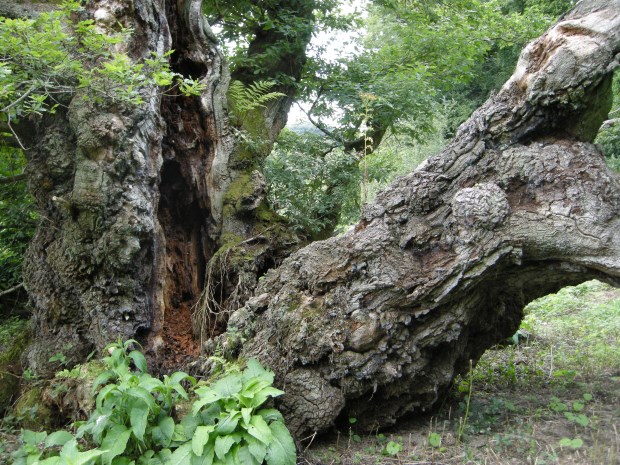
Photograph by Brian Muelaner, Ancient Tree Forum
Thought to be over 1,000 years old, one of Britain’s oldest oaks can be found standing on Offa’s Dyke, around 300 metres from Chirk Castle. Rejoicing in the magnificent name of ‘The Oak at the Gate of the Dead’, this tree is so-named because of the nearby burial of the fallen from the 1165 Battle of Crogen, fought between the forces of Henry II of England and an alliance of Welsh princes, led by Owain Gwynedd. Henry brought a massive army to Oswestry, while the Welsh army gathered in Corwen, and the two sides eventually clashed in battle on the Dyke. Ultimately, the English were driven back, but not without bloody losses on both sides. Up until the 19th century, the area was commonly known as Adwy’r Beddau (The Pass of the Graves), with the land either side of the dyke known as Tir y Beddau (Land of the Graves). It is said that the blood and bones of the dead buried here have nourished this great oak ever since.
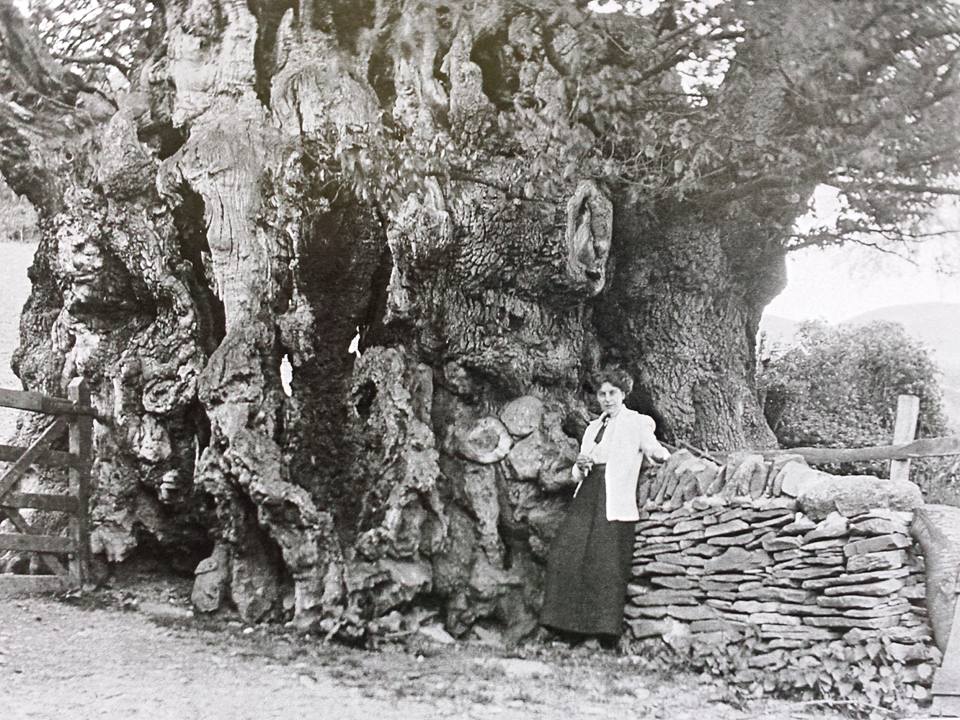
Photograph by kind permission of Mark Williams
The nearby Pontfadog Oak, once known as Wales’ national tree, was estimated to have been around 1200 – 1600 years old when it was brought down in the early hours of 18th April 2013 by fierce gales which swept across the country – until then, it was believed to have been the oldest and largest oak in the UK, and one of the largest in Europe, with a girth of 16m (53ft). The hollow trunk was of such a size it is said that six men once sat around a table inside it, and a 19th century story tells of a bull, which had been missing for two days, eventually being found safe and well within the tree! This tree was already ancient when Owain Gwynedd rallied his troops to it before the Battle of Crogen.
The loss of such a great icon of the countryside was understandably met with great sadness and consternation, especially from the locals, for whom this tree had been a constant and reassuring presence. However, scions (cuttings) have been taken from the ancient tree, and it is hoped that a clone can be successfully planted in the future.
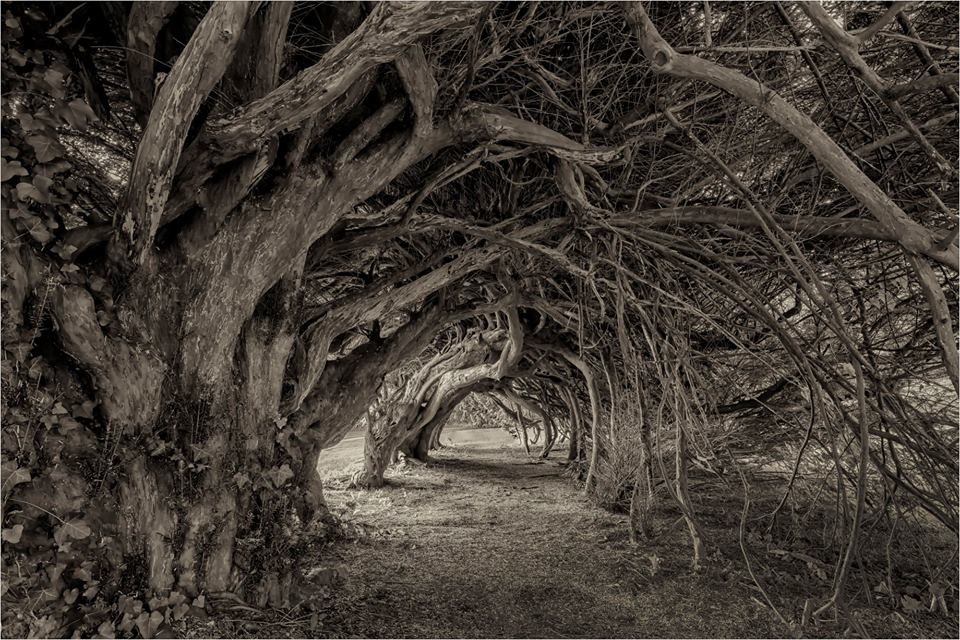
thought to have been planted in the 18th century.
Photograph by kind permission of Roy Carr (royscapes.com)
Often associated with graveyards, yew trees are exceptionally long-lived, and apparently aren’t considered ancient until they’ve lived for around 900 years (in comparison to 400 for an oak). Such a long life span means that many have been present at important dates in our history: for instance, the Magna Carta was signed and sealed beneath a yew tree; that same tree is also said to have been used by Henry VIII and Anne Boleyn as a meeting place for their trysts. The Druids revered the yew for its association with death and rebirth: ‘that darkness is the matrix from which light springs forth, and that out of death, life arises’, and it was later taken up by Christians who regarded it as a natural emblem of everlasting life because of the tree’s amazing ability to regenerate itself.
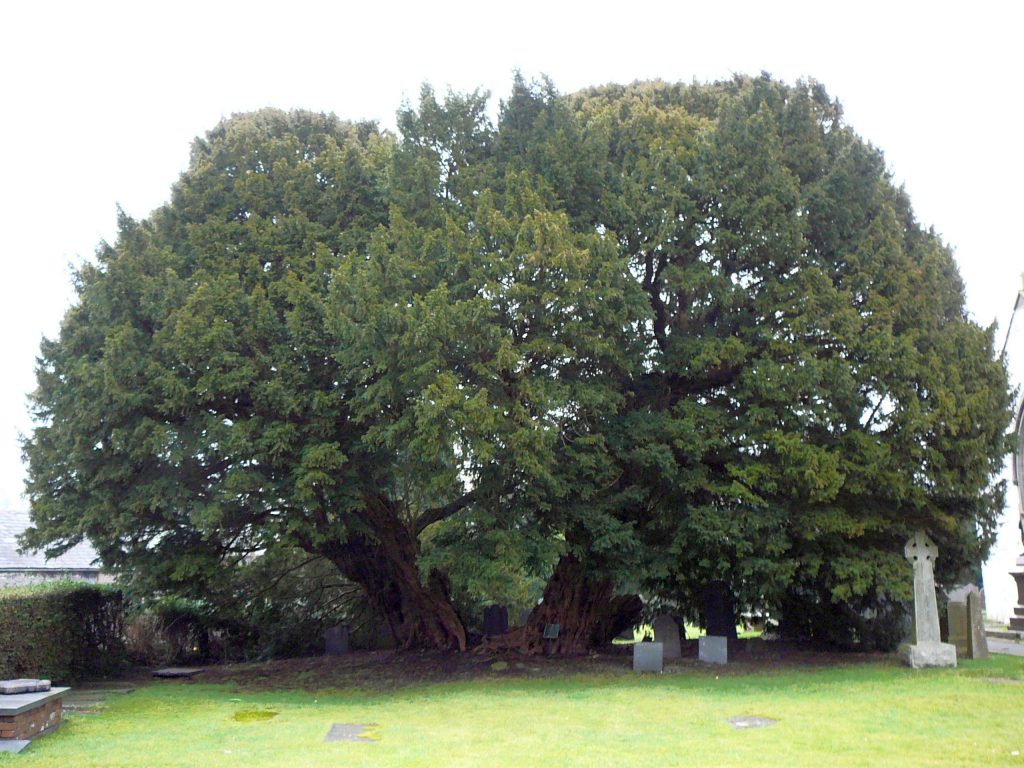
Photograph: Emgaol, Wikimedia
The Llangernyw Yew, thought to be around 4000 years old, stands in the grounds of St. Dygain’s Church, in the County Borough of Conwy. One of the world’s oldest trees and possibly the oldest living thing in Wales, it was planted sometime in the Bronze Age, and is still growing! This beautiful tree is also associated with a chilling legend, that of the Angelystor, or ‘Recording Angel’. Each year on 31st July and again at Hallowe’en, this apparition is said to appear in the medieval church to solemnly announce the names of those parish members who will shortly die.
Legend tells how, one Hallowe’en, local tailor, Siôn ap Robert, laughingly ridiculed the idea of the existence of the Angelystor while drinking in a local pub. To take him down a peg or two, locals dared him to go to the church there and then. With a certain amount of bluster, off he went, determined to make a mockery of the tale. On arriving at the church however, he could hear a deep voice from within, and on getting closer, he heard his own name being recited! Coldly and suddenly, his bravado evaporated. “Hold, hold!” he cried. “I am not yet ready!”, but to no avail: he died later that year. Many villagers today still believe in the existence of the Angelystor – would you go and test the tale yourself, even after a few drinks at the pub?
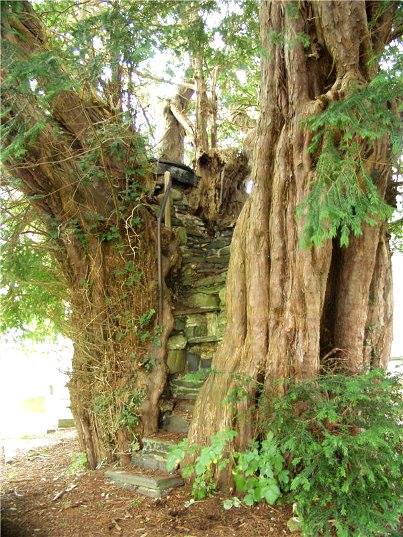
The Pulpit Yew, found in the churchyard of St James’ Parish Church in Nantglyn, Denbighshire, is thought to be between 1500 – 2000 years old. Amazingly, it was converted, possibly in the 18th century, into an outdoor pulpit with the addition of local Welsh slate steps leading up to a podium from which to preach. Many sermons have been preached from here, even it is said, by John Wesley, founder of the Methodist Church. Following nominations from the public, it was shortlisted by the Woodland Trust for their ‘Tree of the Year’ competition in 2017, but lost out to another Welsh contender, The Hollow Tree in Port Talbot, which went on the represent the UK in the 2018 European Tree of the Year.
There are many more remarkable yew trees across North Wales; some, possibly dating back to the Tudor age, can be found clinging to the limestone cliffs in Llandudno – and further afield, in Nevern, Dyfed, the famous yew trees there bleed a red sap every year. This is perhaps not surprising given the results of a 2019 scientific study headed by scientists from Hungary and Denmark, which suggests that trees have a ‘heart’. The study demonstrated that trees have a pulse, which is believed to be the tree pumping and distributing water and nutrients up through its trunk to its branches, just as a heart pumps blood.
The trees of our countryside have helped to shape our landscape, our ideas and indeed, our very identity. We have climbed them, played amongst them, dreamed beneath them, even hugged them – and I’m sure we’ve all simply just wondered at them. I hope you have enjoyed this tour of some of the beautiful and fascinating trees of North Wales, and that like me, you’ve been caught up in the threads of the folklore, mythology and history tangled around their roots and branches.
Cover photograph by kind permission of Nick Wonnacott
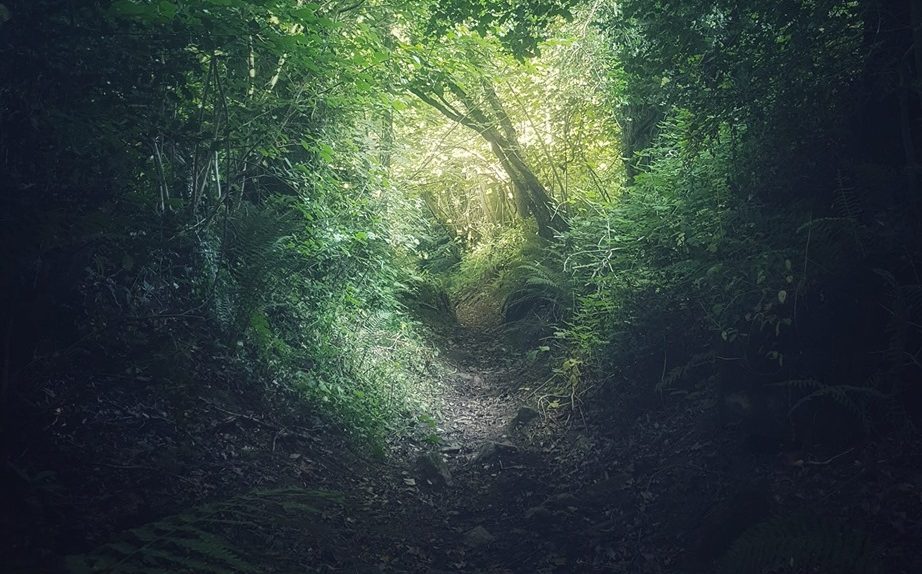
Wonderful Sonia. As always! Many thanks. Xx
Thank you, Mary! X
Absolutely fascinating. Thank you very much
Hi Francine, thank you so much for your very kind comments.
Thank you Sonia, I look forward to these posts, they never fail to inform and fascinate.